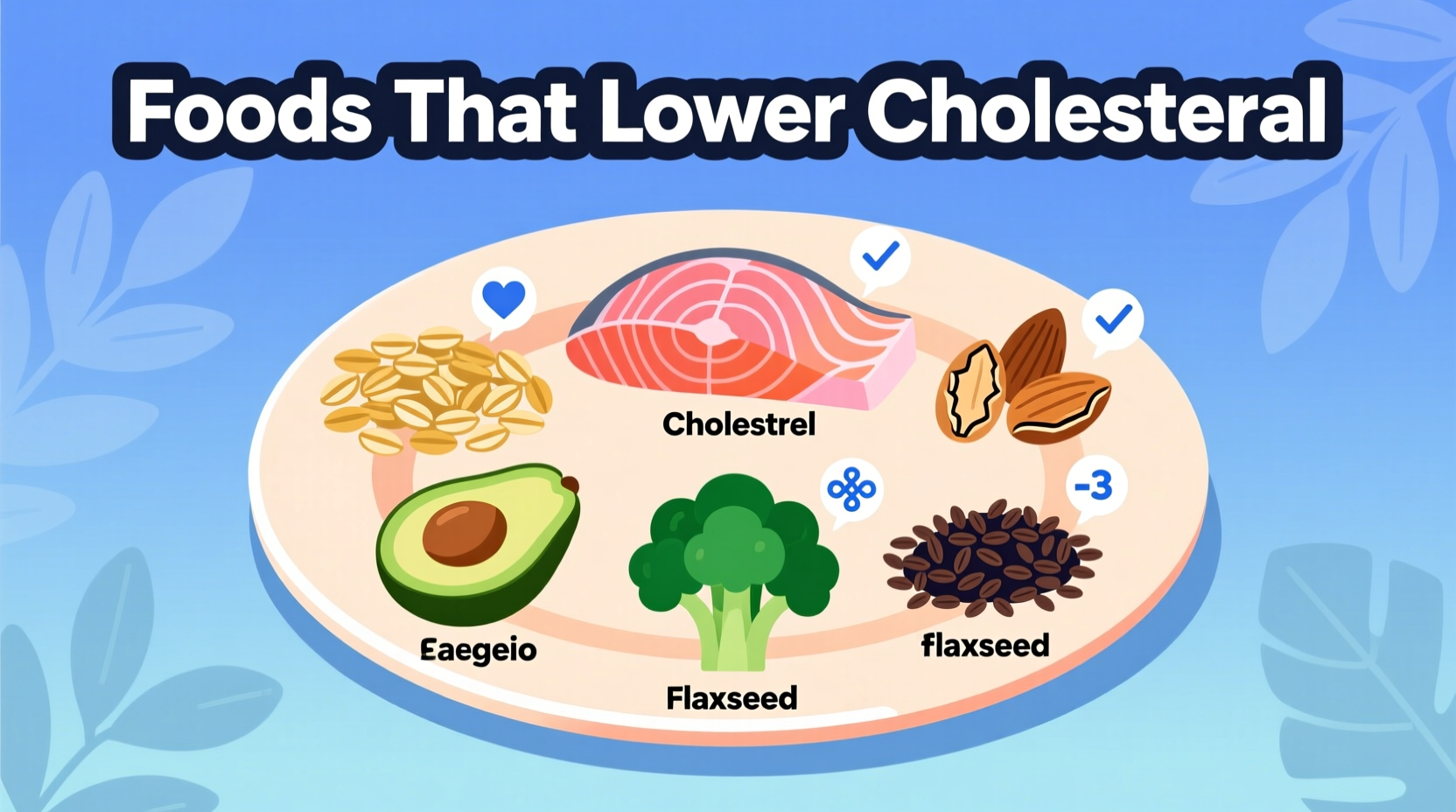When your doctor mentions high cholesterol, your first thought might be medication—but dietary changes offer powerful natural solutions. Research shows specific foods can significantly reduce LDL ("bad") cholesterol levels while boosting HDL ("good") cholesterol. The American Heart Association confirms that incorporating these cholesterol-lowering foods into your daily routine can produce measurable improvements in as little as 4-6 weeks.
Why Food Choices Matter for Cholesterol Management
Cholesterol isn't inherently bad—it's essential for cell construction and hormone production. The problem arises when LDL cholesterol builds up in arteries, increasing heart disease risk. Unlike medications that block cholesterol production, certain foods work through natural mechanisms:
- Soluble fiber binds cholesterol in your digestive tract
- Healthy fats replace artery-clogging saturated fats
- Plant compounds reduce cholesterol absorption
According to the National Institutes of Health, dietary changes alone can lower LDL cholesterol by 5-15%, with even greater reductions when combined with other heart-healthy habits.

Top Evidence-Backed Cholesterol Fighters
Oats and Whole Grains: The Soluble Fiber Powerhouse
Starting your day with oatmeal isn't just traditional—it's scientifically proven. Just 1.5 cups of cooked oats daily provides 3 grams of beta-glucan, the soluble fiber that binds cholesterol. A 2019 American Heart Association review found this simple change lowers LDL by 5-8% in 6 weeks.
Pro tip: Choose steel-cut or old-fashioned oats—instant varieties often lack sufficient fiber. Add berries for extra plant compounds that enhance the cholesterol-lowering effect.
Fatty Fish: Omega-3 Power for Heart Health
Fatty fish like salmon, mackerel, and sardines deliver omega-3 fatty acids that reduce triglycerides and inflammation. The FDA recognizes that consuming 3.5 ounces of fatty fish twice weekly lowers heart disease risk. A CDC analysis shows this habit reduces LDL by 4-6% while increasing protective HDL cholesterol.
| Cholesterol-Lowering Food | Effective Serving Size | Timeframe for Results | LDL Reduction Potential |
|---|---|---|---|
| Oats (beta-glucan) | 1.5 cups cooked | 4-6 weeks | 5-8% |
| Walnuts | 1.5 ounces (14 halves) | 8-12 weeks | 5-9% |
| Avocado | 1/2 medium daily | 4 weeks | 4-7% |
| Olive oil | 2 tablespoons daily | 8 weeks | 5-6% |
Nuts: The Crunchy Cholesterol Solution
Despite their fat content, nuts like walnuts and almonds actively lower cholesterol. The NIH reports that eating 1.5 ounces of walnuts daily reduces LDL by 5-9% in 8-12 weeks. Walnuts contain alpha-linolenic acid (ALA), an omega-3 that improves blood vessel function.
Important note: Stick to raw or dry-roasted varieties—honey-roasted or candied nuts add sugars that counteract benefits. A small handful (about 14 walnut halves) provides the optimal serving.
Practical Implementation Strategies
Your 7-Day Cholesterol-Lowering Meal Plan
Implementing these foods consistently matters more than perfection. Start with these realistic swaps:
- Breakfast: Oatmeal with walnuts and berries instead of sugary cereal
- Lunch: Salad with grilled salmon, avocado, and olive oil dressing
- Dinner: Black bean soup with whole grain bread and side of steamed broccoli
- Snacks: Handful of almonds or an apple with almond butter
Avoiding Common Pitfalls
Many people make these mistakes when trying to lower cholesterol through diet:
- Overdoing 'healthy' fats: While olive oil is beneficial, it's still calorie-dense—measure servings
- Neglecting fiber variety: Different fibers work in different ways—rotate between oats, beans, and fruits
- Missing the big picture: One 'superfood' won't fix everything—consistency across multiple food groups matters most
What to Expect and When
Cholesterol changes don't happen overnight. The Mayo Clinic outlines this realistic timeline:
- Weeks 1-2: Establishing new eating habits
- Weeks 3-4: Initial improvements in blood lipid profiles
- Weeks 5-8: Measurable LDL reduction (typically 5-10%)
- Weeks 9-12: Maximum dietary impact on cholesterol levels
Remember that individual results vary based on genetics, baseline cholesterol levels, and overall lifestyle. Pair these dietary changes with regular exercise for optimal results.
Complementary Lifestyle Factors
Diet alone accounts for about 25-30% of cholesterol management. For best results, combine these food strategies with:
- 150 minutes of moderate exercise weekly
- Maintaining healthy body weight
- Quitting smoking (if applicable)
- Managing stress through mindfulness practices
The synergy between these elements creates greater cholesterol reduction than any single intervention alone.











 浙公网安备
33010002000092号
浙公网安备
33010002000092号 浙B2-20120091-4
浙B2-20120091-4